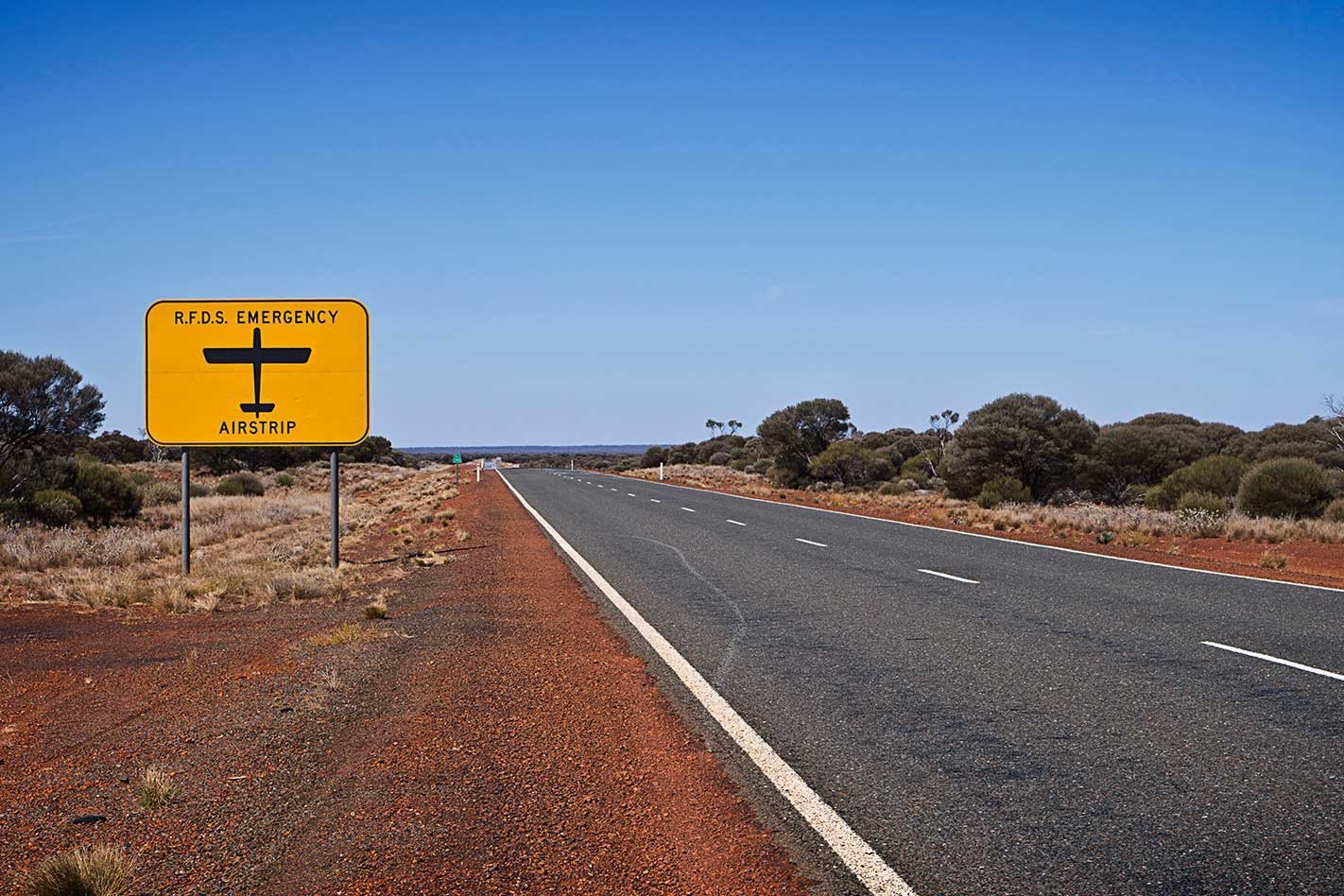This article was first published in the February, 1985 issue of Wheels magazine.
Setting high average speeds across great distances has been a source of challenge, enjoyment and achievement since the birth of the car. Doing it illegally, on public roads, has been just as popular since the day officialdom first started making rules and regulating races.
Rules are there for all the right reasons, of course, but they also frustrate the competitive urge in a lot of drivers who have high performance cars and perhaps the driving skills, but not the inclination to partake of organised, sanitised motorsport — that is, officially sanctioned motorsport.
On a population basis, there are a lot of high performance cars on Australia’s roads and thus a lot of people who would like to use them, if not in anger on a race track, at least in illegal urgency across this challenging continent. The only really surprising thing about this is that it took until 1984 for such an event to be organised, and then there were two…
You will probably have heard of one of the two ’84 ‘Cannonballs’ in some incredibly inaccurate and sensationalist newspaper and TV reports which claimed the entire field of the Melbourne to Fremantle event had been booked for speeding. The other event from Surfers Paradise to Perth, was a very quiet affair, to the point where the organiser will only talk of the cars which finished first, second and third; he won’t even acknowledge that there were any other cars involved.
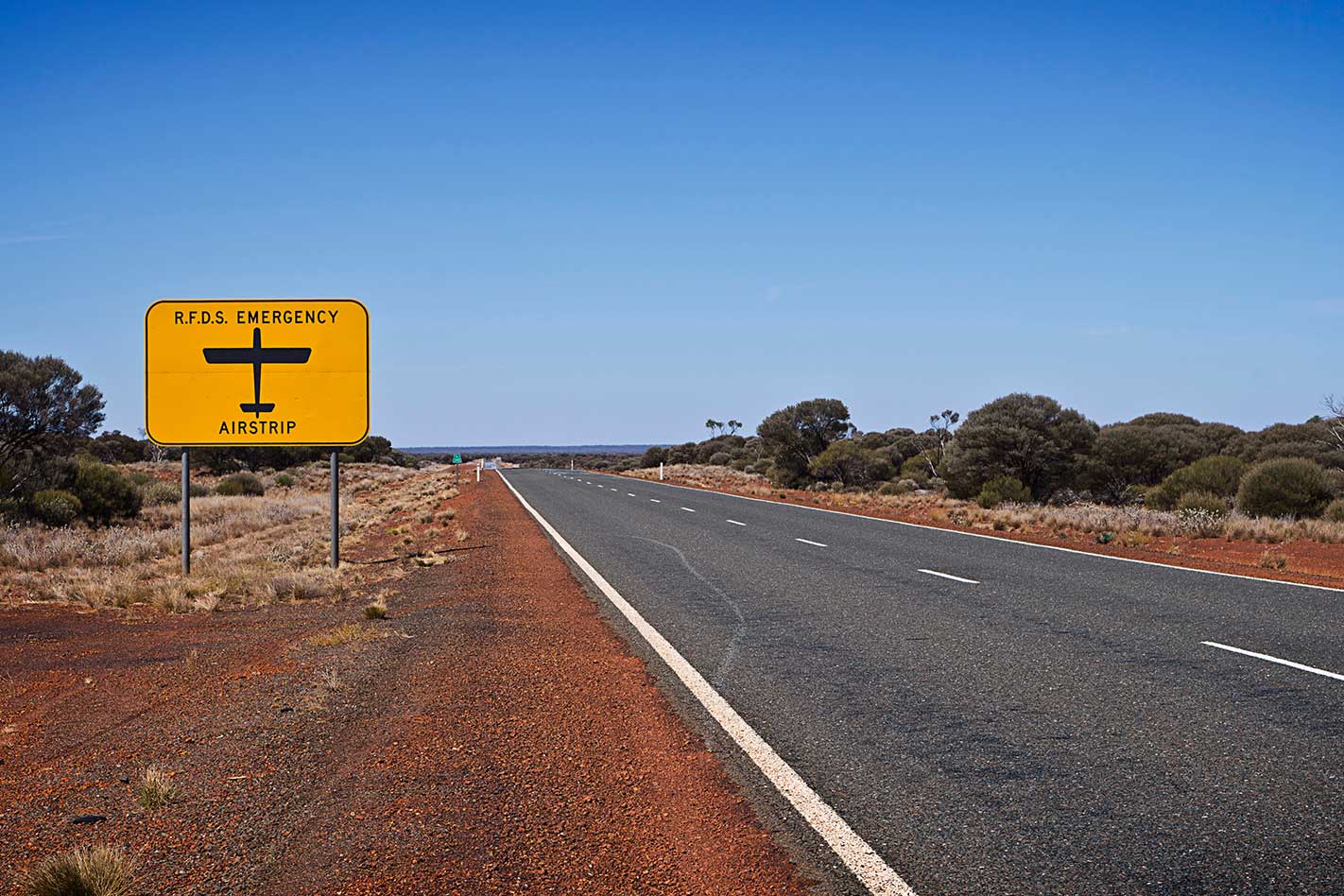
Surfers Paradise to PerthThe Cannonball Sea To Shining Sea Paradise to Perth Trophy Dash competitors left Surfers Paradise, Queensland, on October 22 and exactly 31 hours later, the winning Pontiac Trans Am and its crew of three pulled in to the finish at Westos Hilltop Inn, Perth. Just 15 minutes behind the Trans Am was a Mazda RX-7 (driven solo, with a dog in the passenger’s seat), followed by race organiser Jeff Denmeade, in a Group Three Brock Commodore, in a time of 31 hrs 45 min.
While the Paradise to Perth run didn’t attract the attention the Melbourne to Fremantle event copped, the competitors were worried at the start (in the main street of Surfers Paradise) but no reporters or police showed up. There was plenty of excitement during the race, but no real drama with the law, according to Jeff Denmeade.
“At the sound of the horn we were off, tyres spinning, chasing each other down the street and left at the lights. We were side by side with the Trans Am, with the RX-7 right behind, overtaking and undertaking at the same time, giving old people heart attacks as we flew past on either side.
“The Trans Am took the first turn to Nerang, but we were going so fast and concentrating on catching the Trans Am that we missed the turn, so decided to keep going.
“The times were good: from Surfers to Beaudesert took one hour 15 minutes. The roads are good, there was very little traffic and plenty of corners to enjoy in the mountains between Nerang and Goondiwindi. They’re signposted at 40 km/h but we went through most at about 110 km/h.
“We went through Goondiwindi like it wasn’t there and after that it was down through northern NSW and straight to Cobar, which is where we saw our first police. It was a clever hideout, off to the right in the bush; we didn’t see them but our Escort detector picked them up on X band, the hand-held frequency, which is rare in NSW. We slowed to 115 km/h and drove past behind a truck and when we could see them clearly, there they were laying back with their feet up on the doors, waiting for something to happen.
“We wondered about the threats before the race, when I was told they’d watch our every move.”
Cobar was the site of the Commodore’s third fuel stop, at 3.00 pm, eight hours after leaving Surfers Paradise, and about one hour ahead of their planned schedule. They were also between 30 minutes and one hour ahead of the RX-7 and Trans Am, which were travelling close together.
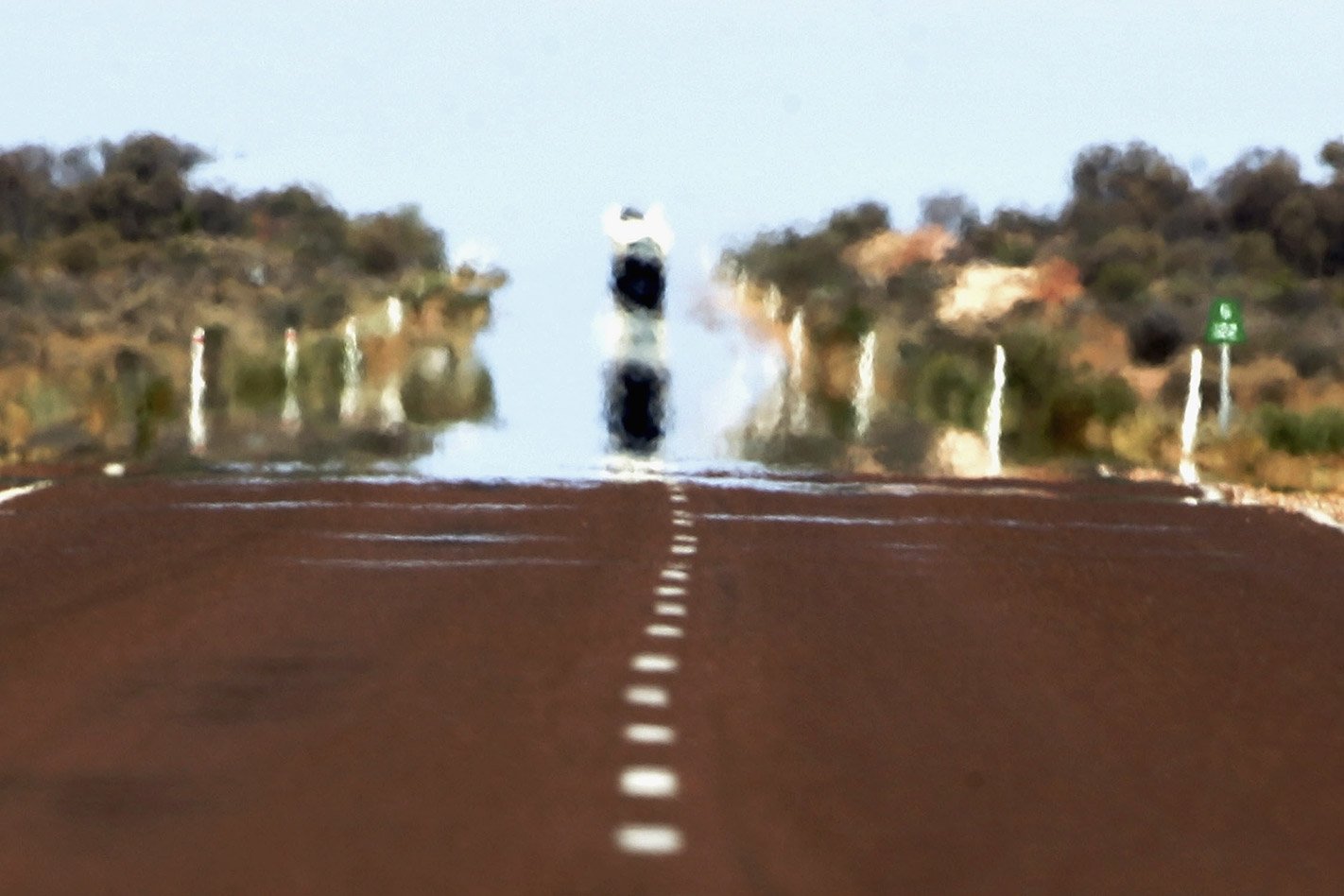
“It’s almost a straight line from Cobar to Broken Hill and that leg was no drama, but we had three red lights in Broken Hill, and then were driving into the setting sun.
“Well into the night we turned right into Peterborough and then on to Port Augusta and we still hadn’t seen the Trans Am or RX-7. We also didn’t see any police in South Australia.
“Just past Port Augusta we ran out of fuel and while we were emptying jerry cans into the Commodore by the side of the road I heard way off in the distance a high-pitched roar, then a set of lights appeared. I knew it was the Trans Am because its 403 engine has a noise all its own, and it was howling. They backed off when they saw our emergency flashers because they thought it might be the law. When they saw it was us they switched on the nitrous oxide and wound it up to warp speed as they went past. It looked like a low flying fighter plane.
“We took off straight after them and had the Commodore on the redline at 5700rpm and then up to 6000rpm in fourth about 250 km/h.”
Running flat with the Trans Am meant fuel consumption rose dramatically and at the next fuel stop, with the Trans Am running too hot, the service station took on some of the appearance of a race pit bay.
“We pulled up in a cloud of tyre smoke and the Trans Am was away a second later, sideways out of the driveway. The manger came over to us, one bloke on the pump, the other doing the screen laughing, her guts out, saying: ‘What’s going on here? I haven’t had so much fun since we dry cleaned and tumble-dried the cat!’ She said the Trans Am was getting some fuel surge according to what she had heard, so that was a chance for us.”
The Trans Am pulled over near Ceduna and the Commodore team stopped to help them repair a fuel line and during the 45-minute job the RX-7 and its wide-eyed solo driver pulled in.
Once on the road it was three metres apart at 200km/h until the Commodore got a flat going into the next service station. A fast gaining Mercedes-Benz slowed the Commodore further (they thought it was the police) and gave the Trans Am its 45 minute lead. “It’s doing 200mph,” said one trucker.
Eighty km from Perth the Commodore was caught at 143km/h by the radar in a police Commodore (“with more aerials than a Dick Smith shop,” according to Denmeade). When asked if he had seen the Trans Am the police officer said he had booked it for doing 153 km/h. The Commodore crew also asked what the legal limit was and the officer said 110, but that he was going back the other way and there were no more police for at least 50km.
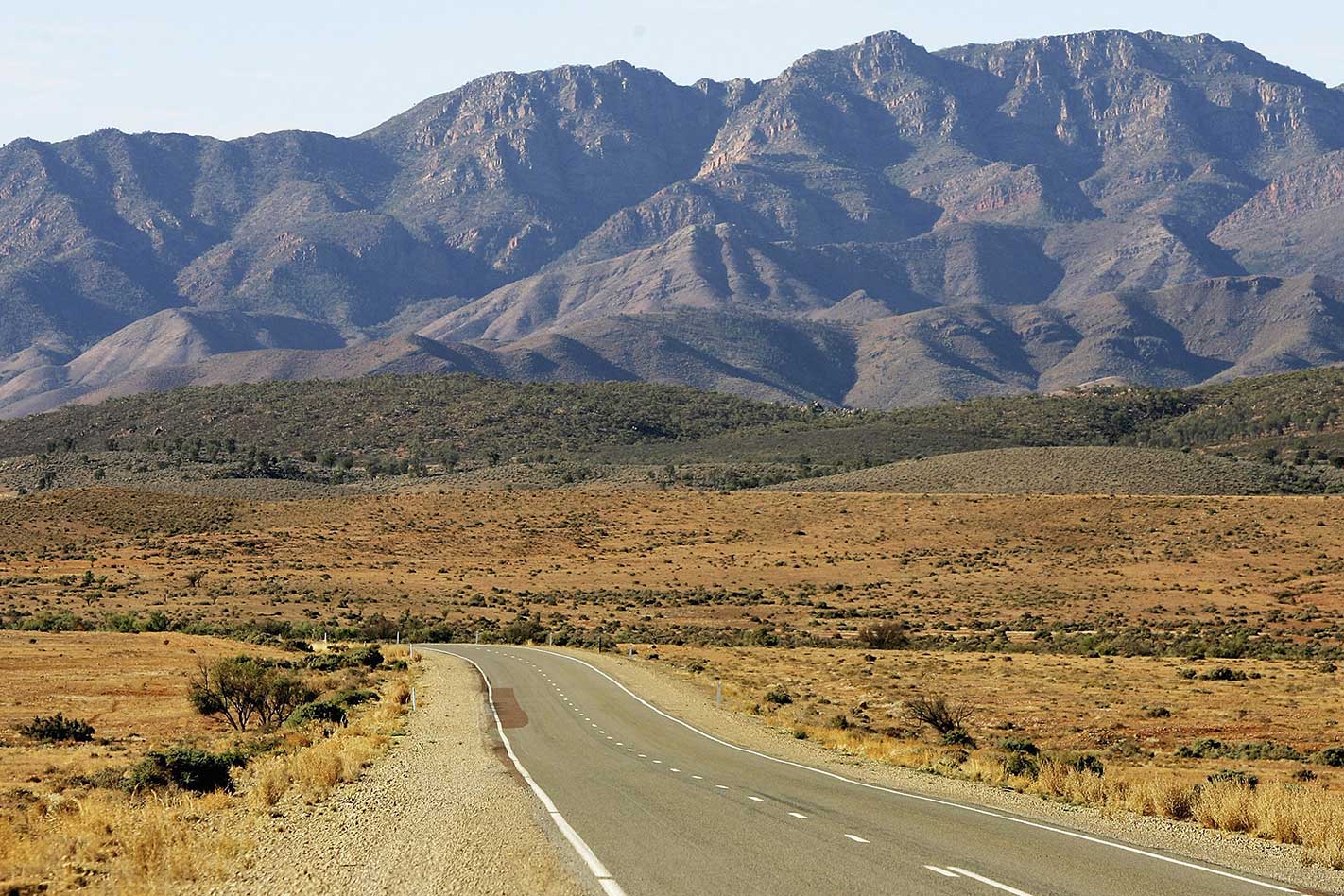
One other driver was booked for doing 184km/h, despite WA newspaper reports that five people were booked at speeds of more than 180km/h.
Organiser Denmeade said after the race that “no money in the world could buy the amount of fun we had. We had a ball. There were three bookings — all in WA — and the cars needed a lot of stone chips touched up, so bras will be the go for the next race.
“It’s on again late in ’85, for up to 30 cars; we’ve had 15 firm entries on the strength of the ’84 run so far.”
Melbourne to Fremantle
The Australian Cannonball Cup, from Melbourne to Fremantle, started off on the wrong foot when the organiser David Adamson’s office was broken into and the phone numbers of all competitors were stolen.
“But only 10 entries withdrew, leaving 100 cars, most with three drivers, in the event,” said Adamson.
“All of those, including the ones that withdrew from the ’84 event, have entered for this year, which definitely won’t be going into Western Australia. It will still be coast to coast though.”
The Cannonball Cup, held in early November ’84, was won by a truck driver in a six-wheeler Holden five-litre utility with the tray holding a huge petrol tank. His time was 32 hours, 22 minutes, 6 seconds, so despite the fact that entrants “were expected to obey the traffc laws”, the winner didn’t. Second was a VH Group Three Brock Commodore and third a five-litre V8 ex-police pursuit Commodore.
“It wasn’t an illegal event because it was pointed out that road laws were to be obeyed and that it would be obvious if people had disobeyed the laws and arrived in less than the estimated time of the event according to the speed laws. If anyone chose to disobey the road rules they did so at their own risk,” David Adamson said.
“The idea was to get across the country in the best time without doing anything illegal. We contacted the police in Victoria, South Australia and Western Australia a month before the event with all the information about the race. The idea was to establish it as a legitimate event, like the Redex or Round Australia trials, rather than as anything like the Cannonball movie.
“Obviously it didn’t work out that way; the WA police weren’t interested when I told them about the event and they were by far the worst. The police were okay in South Australia and they were very good in Victoria, in that they did their job without going to some of the ridiculous extremes of the other states. Like having police hiding in trees with radar equipment.
“We’re changing the event for ’85. It must be done so that we can work with the police, within the law, so it will probably be broken up into sections.”
Adamson wasn’t impressed with the way the media handled the event and pointed out that although most newspaper and TV reports said all the entrants were booked, some for doing more than 180km/h, and six were arrested for dangerous driving, this was a long way from the truth.
“In fact, less than half the field was booked: there were 18, four of whom had to go to court. But of those 18, 14 were relatively minor offences, like travelling at 115km/h in a 110 zone. One entrant, in a Porsche 365B, had a police pursuit car on his bumper for 300km and he wasn’t booked.”
One report, in a Sydney newspaper, said: “Chief Inspector (Victorian Police) Ralph McMenomy said at the outset of the race that it did not have police backing. ‘Some speeds have been excessive but basic driving in Victoria has been orderly due to visible police presence,’ Mr McMenomy said. The race organiser, David Adamson, refused to comment.”
David Adamson’s comment: “There’s not much I can say about it now that all the sensational reports are accepted as fact by the general public simply because they believe the media reports. It’s too late to point out that I ‘refused to comment’ should have been ‘we didn’t contact him’.”
Organiser Adamson didn’t compete in the race, but flew along the route, stopping to film a documentary on the event that he hopes to sell around the world as a one-hour TV special. “There really is some terrific stuff there: the lengths the police went to made for good film,” he said.
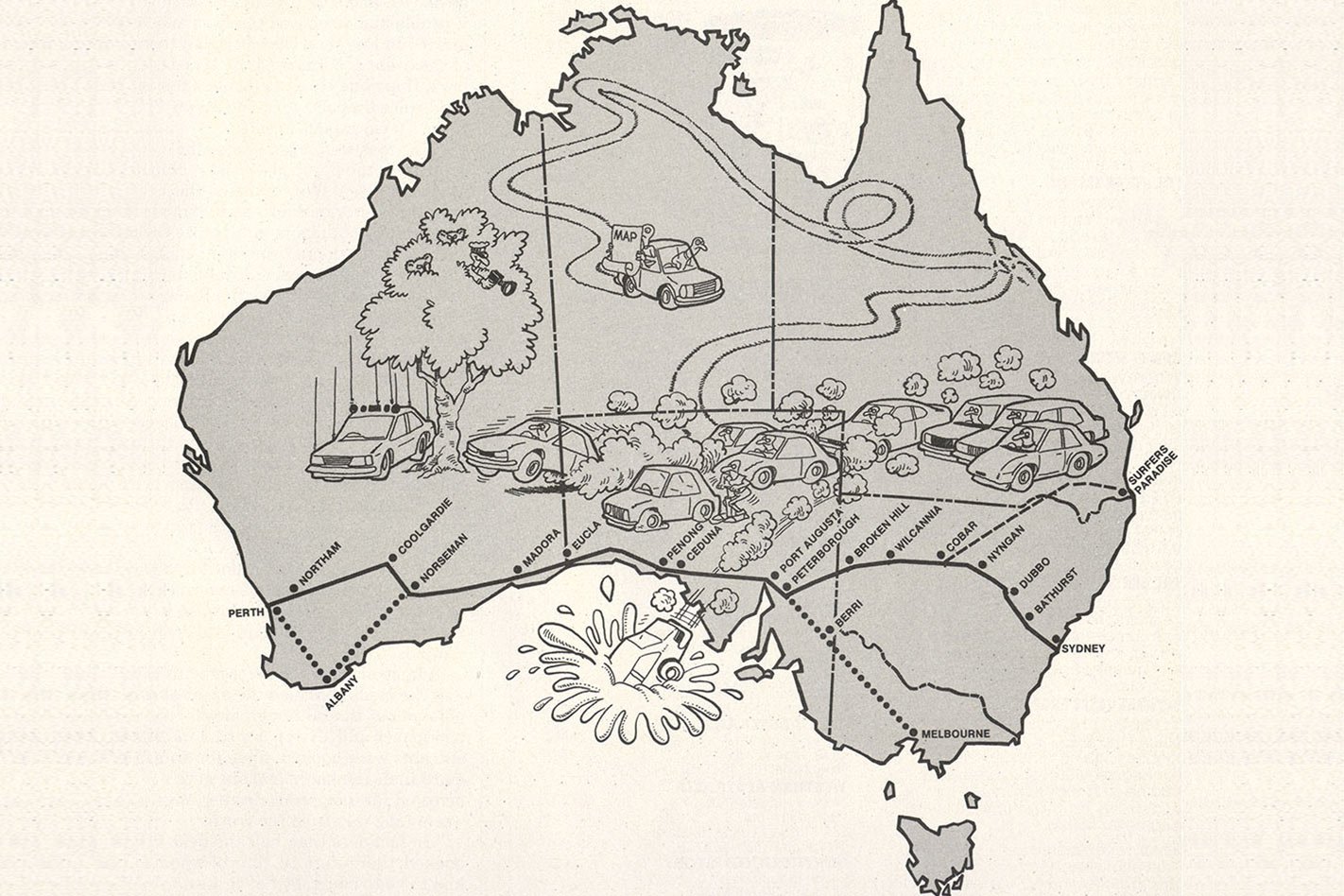
The original Cannonball and its many copies
American journalist Brock Yates started it all, even though the Cannonball’s image with the general public is very much Hollywood and Burt Reynolds tinted.
Yates conceived the run as a way of attacking the US Government’s 1971 “Speed Kills” campaign. He named the run for Ernest G. “Cannonball” Baker, a truckie who crossed the USA on motorcycles and in trucks in the ’20s and ’30s in 50 to 60 hours. Heroic stuff considering there were no real interstate highways.
No entrants showed up for the inaugural May ’71 race, but Yates did the run and wrote about it in Car & Driver and planned the second Cannonball for later that year. Yates announced there would be no more Cannonball runs after ‘79 because the race was gaining an air of being an “official” event and he considered it had made its point that America’s highways could be used efficiently and safely by fast cars with safe drivers. This he backed with the fact that 107 cars had travelled a total of more than 480,000 km at an average speed of 120km/h, without anyone being injured.
The following is a list of the runs which followed Yates’ first Cannonball.
- Cannonball Baker Sea-To-Shining- Sea Memorial Trophy Dash, November ’71. Manhattan New York to Redondo Beach California. Won by Brock Yates and Dan Gurney in a Ferrari, 35 hours, 54 minutes
- Cannonball, 1972. Won by 972 Cadillac de Ville Coupe (whose owner paid the drivers to transport his car across America), in 34 hours 16 minutes. Thirty-four cars competed. No races in ’73 and ’74 because of the fuel crisis.
- Cannonball, April 23, 1975. Won by Ferrari 246 Dino, in 35 hours 53 minutes. Eighteen cars competed.
- The last Cannonball, April 1, 1979. Won by a Jaguar XJS, in 32 hours 51 minutes. Forty-six cars competed and Yates used the race as the basis for his script for the movie, The Cannonball Run.
- First US Express, 1980. Won by a Mazda RX-7, in 33 hours, 39 minutes.
- Cannonball Europe, 1981. Won by a Mercedes-Benz 500SEL, at an average speed of 180km/h, from Holland to the south of Spain.
- US Express 1981. Seventeen cars competed in the event.
- Cannonball Europe, 1982, from Denmark to south of Spain.
- US Express, 1982. Sixteen cars competed in the event.
- First Michael A. Preston Memorial Four Ball Rally, June ’82. Won by Mercedes-Benz 380 SEL in 37 hours 18 minutes at an average speed of 128km/h. Twenty-seven cars competed.
- Four Ball Rally, June 1983. Won by ’78 Porsche 911 SC, in 36 hours 10 minutes at an average of 138.0 km/h.
- First Cannonball Paradise to Perth, 1984. Won by Pontiac Trans Am in 31 hours even, Surfers Paradise to Perth.
- First Annual Australian Cannonball Cup, November ’84. Won by six-wheeler five-litre V8 Holden utility, in 32 hours 22 minutes 6 seconds, Melbourne to Fremantle.
Wheels Editor Peter Robinson and (then) Assistant Editor Steve Cropley have felt the urge often, and twice crossed Australia from Sydney to Perth. The first, in 1977 in a fully- optioned 4.9 litre V8 XC Falcon GS, produced a cross-Australia time of 32 hours 58 minutes to cover 4041 km: an average of 123.9km/h and an average fuel figure of 4.25 km/l (12 mpg).
The reason for the trip can be found in Cropley’s introduction to the story (Wheels, July ’77): “Our plan is to drive to Perth non-stop provided it can be done without nervous breakdowns and open warfare in the cockpit. We don’t make a lot of noise about that side of it because we reckon it will guarantee further ‘friendly’ accusations of madness, of needlessly wasting energy resources, creating a public nuisance and, for all we know, disturbing the slumber of wild camels west of Eucla. We particularly want to see how quickly the trip could be done by a pair of competent drivers in a good car and we also want peripheral information like the frequency and attentiveness of the police on the crossing, the state of the roads and the behaviour of the car at a ton-up cruise with the air on all the time. We also want to enjoy ourselves.”
The second Wheels “one-car Cannonball” was in 1980, when Robinson and Cropley drove a specially prepared Alfetta two-litre sedan for a time of 29 hours 14 minutes and 5 seconds, for an average speed of 137.5km/h. The Alfa’s preparation included an extra 70 litre fuel tank, Koni suspension and a set of giant Cibie Super Oscar driving lights. Of this marathon, Editor Robinson said (Wheels, November 1980): “If I’m honest I’ll admit we did it for no other reason than because we wanted to. Oh, I can justify it on moral, ecological and newsworthy grounds and will do so, just wait and see. But the reality is nothing so boring. It was to be an adventure, a giant self- indulgence of the very best kind, for the simple fact is Steve Cropley and I wanted to see if we could drive across Australia more quickly than we did three years ago in a 4.9 litre Falcon.”
That they did, and the urge has been submerged since.

